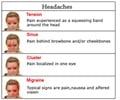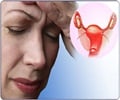- Estrogen and other sex hormones could be the reason why women get more migraine than men
- The sex hormones affect the cells around a sensory nerve and the blood vessels connected to the nerve in the head
- The study could contribute to better-personalized medicine for migraine therapy in the future
Study
Ferrer-Montiel and his team reviewed decades of literature on sex hormones, migraine sensitivity and the responses of the cells to migraine triggers to identify the role of specific hormones.- While the hormone testosterone seems to protect against migraines, another hormone called prolactin appears to make migraines worse. They cause the ion channels that are present on the cell surfaces more or less vulnerable to migraine triggers. Ion channels usually control the reactions of the cells to outside stimuli.
- Estrogen and changes in estrogen levels sensitize the cells around the trigeminal nerve to stimuli. That makes it easier to trigger a migraine attack.
- Estrogen has been considered a risk factor for migraines since the condition prevails more in menstruating women and during period-related changes in hormone levels.
Nonetheless, the authors see a promising future for migraine medication in their current findings. They plan to continue their research using pre-clinical, human-based models that better represent real patients.
"If successful, we will contribute to better personalized medicine for migraine therapy," he says.
Migraines
Migraines typically cause a throbbing or a pulsing kind of pain that could be moderate to severe in degree. The pain is usually felt on one side of the head. The associated symptoms could be nausea, vomiting, and sensitivity to light and sound.Migraines are more likely to occur in women, in people who have a family history of migraines, and those having medical conditions like depression, anxiety, bipolar disorder, sleep disorders and epilepsy.
Migraines have a lot of triggers including stress, anxiety, fatigue, hormonal changes in women, certain foods and medications, and weather fluctuations.
References :
- Maite Artero-Morales, Sara González-Rodríguez and Antonio Ferrer-Montiel., TRP Channels as Potential Targets for Sex-Related Differences in Migraine Pain" Cellular Biochemistry 14 August (2018) https://doi.org/10.3389/fmolb.2018.00073
- Migraine (https://medlineplus.gov/migraine.html)
















